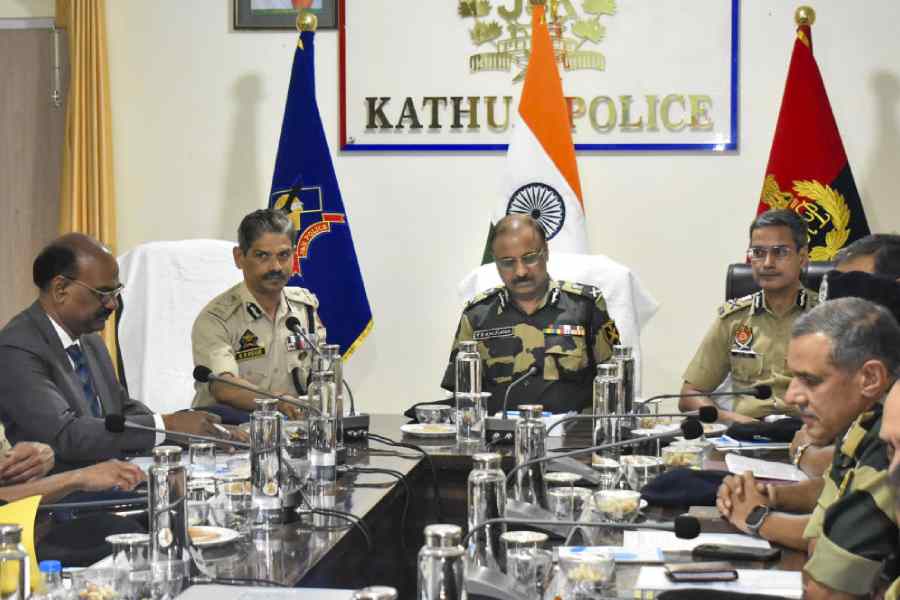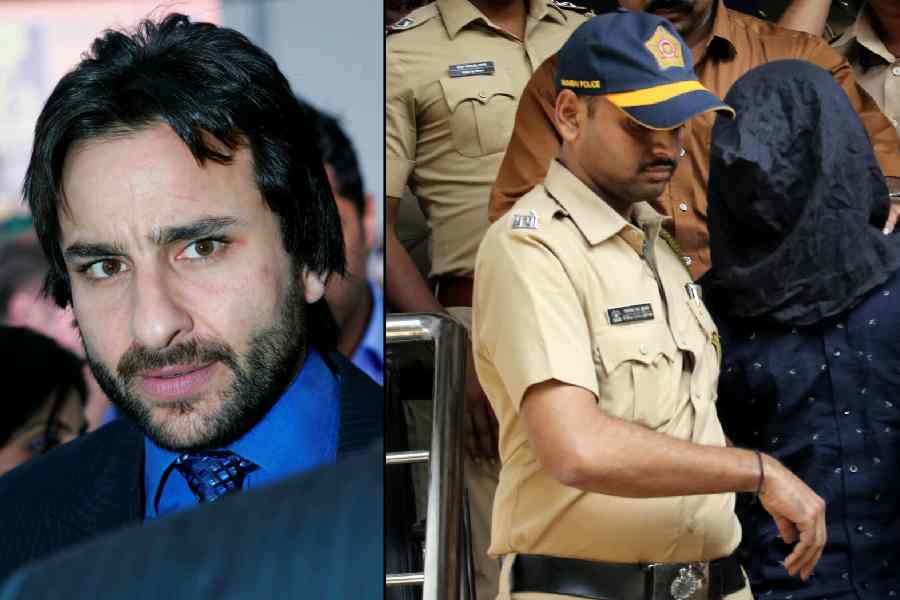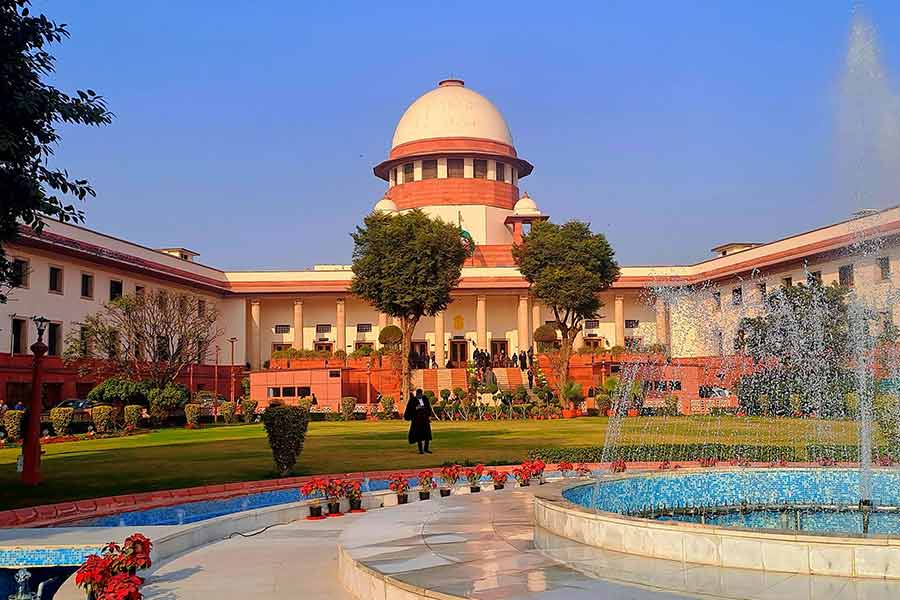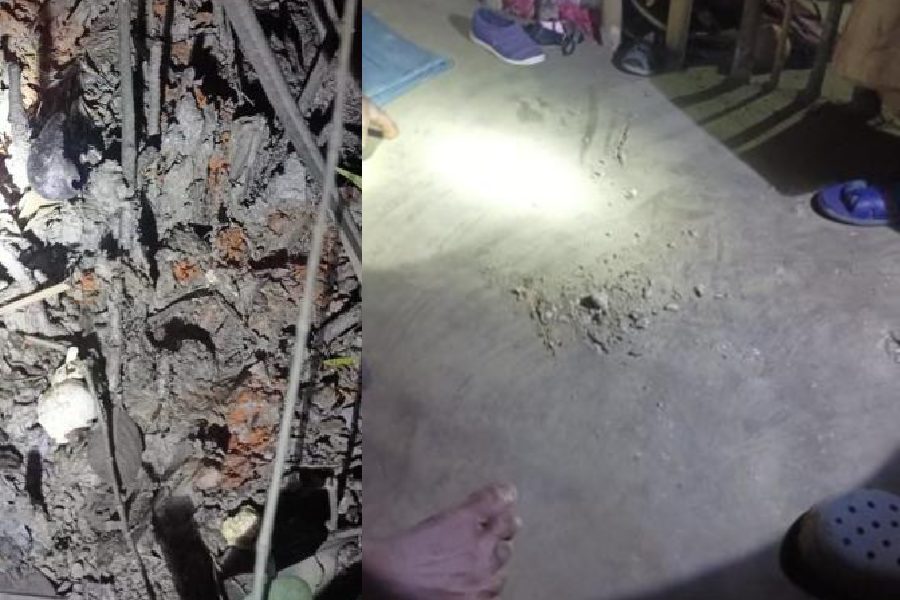Top police officers from Jammu and Kashmir and Punjab, joined by the BSF brass and central agencies, put their heads together on Thursday in a rare inter-state security review meeting to discuss joint strategies to check militant infiltration
and attacks.
The development comes amid a surge in militant attacks in Jammu, with
the security forces unable to nab the killers in most instances.
Reports say that dozens of militants have sneaked in this year despite the presence of a robust counter-infiltration grid on the Line of Control and the international border
with Pakistan.
The Khalistan movement too is believed to be gaining ground with suspected sightings of militants in Punjab.
The holding of the conference underlines the challenge that the renewed militancy in Jammu has posed for the security establishment while the country’s political leadership busies itself peddling an all-is-well narrative.
Sources said the meeting, held in Kathua (Jammu), explored with concern the gaps in the counter-infiltration grid that had allowed several successful infiltration bids
by militants.
The participants included BSF special director-general Y.B. Khurania, Jammu and Kashmir director-general of police R.R. Swain, his Punjab counterpart Gaurav Yadav, Jammu and Kashmir additional DGP (law and order) Vijay Kumar, his Punjab counterpart Arpit Shukla, BSF inspectors-general from Punjab and Jammu, and officers from the central security agencies.
In a post on X, the Punjab DGP said the meeting was a “highly useful Inter-State Coordination Conference” that focused on “enhancing border security and synergy between the two State Police Forces and the Border Guarding Force”.
He said the conference involved the “exchange of best practices and exploring innovative solutions to bolster border management and public safety”, and that the forces were “dedicated to maintain(ing) internal security” in Jammu and Kashmir and Punjab.
Jammu has already seen inter-state synergy between army units, with the Himachal Pradesh-based 9 Corps and Jammu-based 16 Corps pooling men and resources together in the hunt for militants.
On June 12, a militant attack in Jammu killed nine Shiv Khori pilgrims and injured dozens. An ambush in Kathua on July 8 killed five soldiers, including a junior commissioned officer, and injured five others, all from 9 Corps.
Sources said that much of the focus of the security apparatus over decades has been on plugging the loopholes along the LoC in Kashmir. Besides, the tensions with China on the Line of Actual Control too have led to the thinning of security presence in Jammu.
A source said the militants were using advanced technology — including the Chinese-made “Ultra-Sets”, a heavily encrypted telecom gear, and drones — as well as secret tunnels. They are also exploiting Jammu’s difficult topography, marked by rugged terrain, a vast mountain network, and thick vegetation.
Thousands of boots are on the ground to hunt down the militants involved in the attacks, but the dozens of search operations across several districts in Jammu have largely remained unsuccessful.
The forces have rounded up dozens of people for questioning, seeking clues about the militants. Such arrests, though, risk angering the local population who had in the mid-2000s played a key role in ending militancy in Jammu region.
Congress veteran Karan Singh, scion of the erstwhile Dogra royal family, has urged defence minister Rajnath Singh to put all the Jammu districts back under the operational responsibility of Jammu-based army corps.
“For many years, the Jammu Division was under the Nagrota (Jammu) Corps whose headquarters are hardly thirty miles away from Jammu,” he said in a statement.
“Some years ago, for some obscure reason, the Jammu Division was removed from Nagrota and placed under (9 Corps) of Western Command in Chandigarh, over 200 miles away.”
He added: “I think that the old system should be retained to ensure better and integrated dominance of the area in a militancy environment.”










